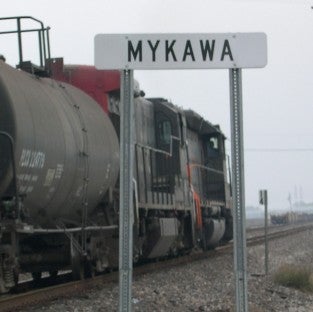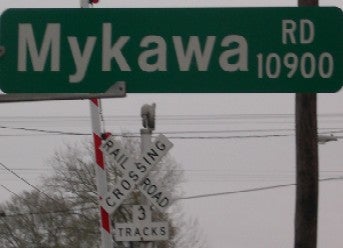Shinpei Maekawa
While some Japanese farming colonies flourished, others failed. Shinpei Maekawa's project is one example of such a tragedy. Born in Aichi Prefecture in 1874, Maekawa went on to graduate from what would become Hitotsubashi University, a leading commercial college in Tokyo at the time. In 1904, he attended the Louisiana Purchase Exposition in St. Louis as an official Japanese delegate. The exposition was a popular meeting place for wealthy Japanese travelers to exchange information, and here, Maekawa became interested in the prospects of growing rice in Texas. Before returning to Japan, Maekawa, accompanied by friends including Yoshio Mayumi, stopped by Texas to visit the farm established by Seito Saibara as well as the Santa Fe Railroad Company. Impressed with the Saibara farm, Maekawa decided to realize his ambitions in Texas.
After a year of preparing for the emigration, in 1906, Maekawa returned to Texas with four young recruits, among whom was Kasoku Sawada. Recalling his memories of Maekawa for the Houston Post in 1965, Sawada says, “He was rather tall for a Japanese, of light complexion and with a fairly good command of English. He was particularly kind, admired by his neighbors and one who made friends readily.” With the advice of Garrett A. Dobbin, the colonization agent for the Sante Fe railroad company, Maekawa put down a payment for 520 acres of land south of Houston near Erin Station. The faming thus began.
Yet, not a year into a project, tragedy struck. Maekawa was driving a large wooded seed roller hitched to a team of mules when he ended up pinned under the roller.
“Although he had never driven mules, the animals seemed gentle. He had driven a horse and buggy with ease, and the possibility of danger never occurred to us,” says Sawada, who was present at the scene. Two men came to rescue Maekawa and attemped artificial respiration, but Maekawa was dead.
“It was worse than losing a light in the darkness,” Sawada recalls. “We were only four months in this country. We only knew a few words of English and nothing of the prevailing customs.”

After the accident, Maekawa’s wife in Japan sent a man to help manage the farm in his stead, but the project soon died out. Two of the men who had come to Texas with Maekawa returned to Japan, discouraged.
Still, Maekawa’s legacy lives on. Devastated at the news of his friend’s death, Dobbin renamed Erin Station to Mykawa Station in his honor. His grave is located in Hollywood Cemetery, Houston. The gravestone was placed in safekeeping during the World War II period due to threats and was later restored. Mykawa Station no longer exists, but parallel to the railroad tracks in South Houston, Mykawa Road remains.

